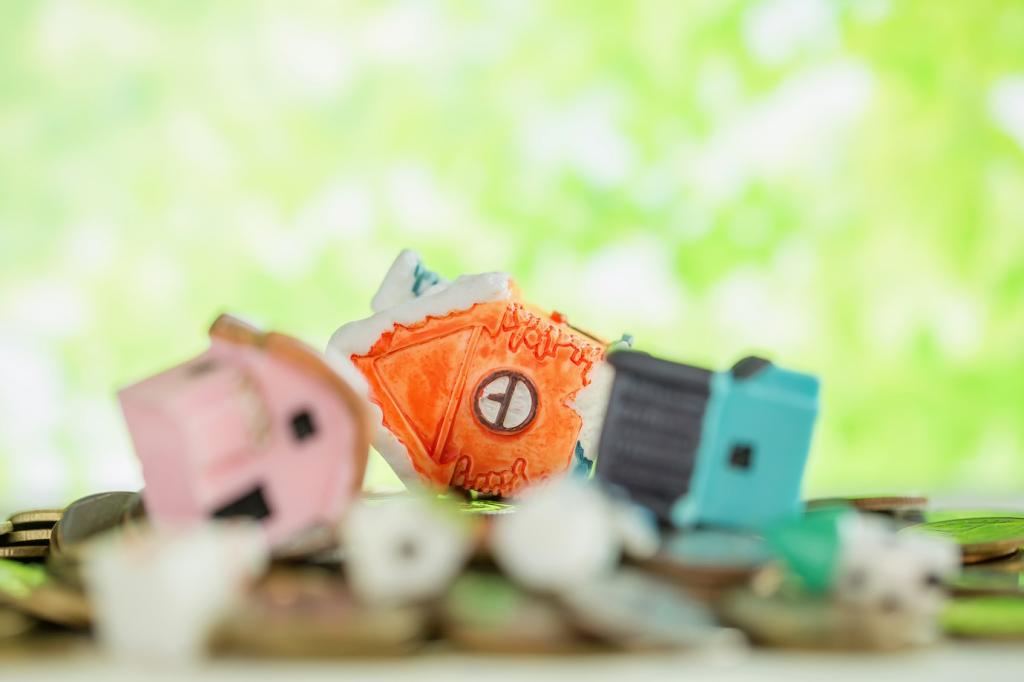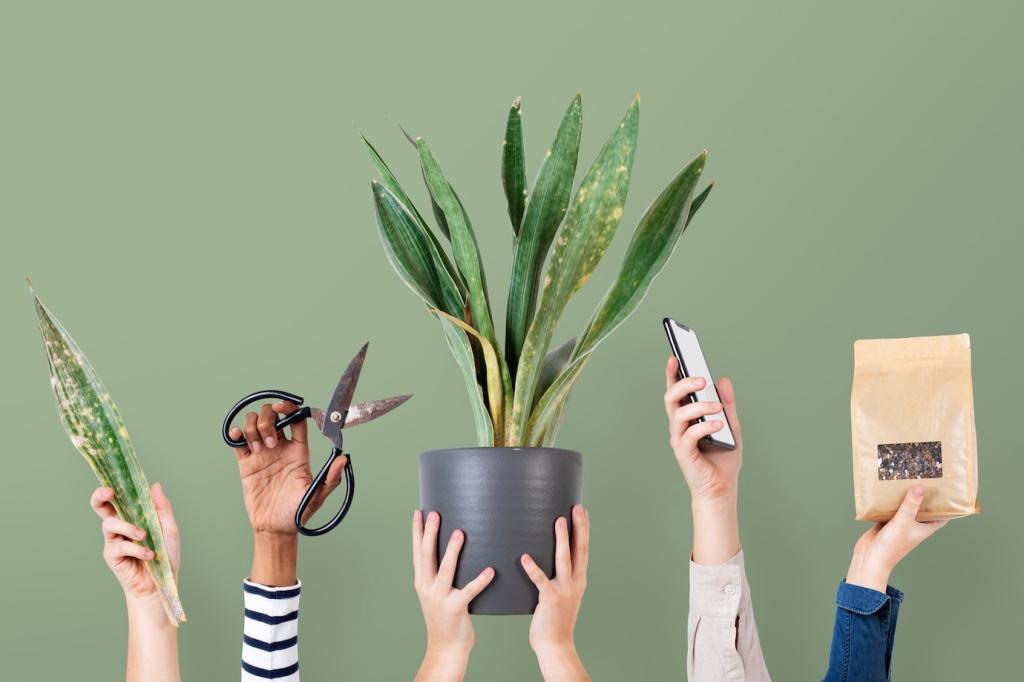
Plastic-Free Living: A Comprehensive Guide
Plastic-free living is an approach to daily life that aims to eliminate or drastically reduce the consumption of plastic materials, especially single-use plastics, to mitigate environmental harm. This guide offers a thorough exploration of how individuals, families, and communities can adopt sustainable, plastic-free alternatives across various aspects of modern living. By understanding the origins of plastic pollution, learning how to shift habits, and discovering practical solutions, readers will be empowered to make informed, positive changes for their health and the planet. Embracing a plastic-free lifestyle not only reduces ecological impact but also fosters mindful consumption and a deeper connection to environmental stewardship.
The Environmental Impact of Plastic
Plastic pollution deeply affects ecosystems worldwide, as plastic waste accumulates in rivers, seas, and on land. Wildlife can become entangled in plastic debris, leading to injury or death, while many species accidentally ingest plastic, mistaking it for food. This ingestion can cause starvation, poisoning, or reproductive issues. Over time, plastics fragment into microplastics, infiltrating soil and waterways and entering food chains. Human activities, particularly improper disposal and the prevalence of single-use items, intensify these issues. The consequences ripple outward, influencing ecosystem health, biodiversity, and even the services these ecosystems provide to humanity.
Plastic exposure poses several risks to human health, both directly and indirectly. Chemicals used in plastic production, such as phthalates and BPA, can leach into food and beverages, particularly when plastics are heated or degraded. These substances are known endocrine disruptors, potentially contributing to developmental, reproductive, and immune problems. Furthermore, microplastics in water or food may accumulate in the human body, though their long-term effects are still under research. Reducing plastic use and switching to safer alternatives can decrease exposure to these harmful compounds, supporting not only environmental wellbeing but also personal and public health.
The problem of plastic waste is truly global, with millions of tons generated each year and only a small percentage effectively recycled. Much of it ends up in landfills or natural environments, travelling vast distances on wind and ocean currents. Developing nations often bear the brunt of poor waste management practices, while wealthy countries export significant amounts of their plastic waste abroad. This interconnected issue affects all corners of the globe, demanding international cooperation, improved recycling systems, and, critically, a reduction in the use of disposable plastics. Addressing plastic waste at its source is imperative for a cleaner, healthier planet.
Before making changes, it’s essential to determine your current plastic footprint—the amount and types of plastic you use and dispose of regularly. Start by observing the packaging of groceries, cleaning products, and personal care items, noting how many are plastic-based. Consider how often you use single-use products, such as bags, bottles, or straws. This reflection can be enlightening, revealing where the most significant reductions can be made. Tracking your footprint over time also allows you to appreciate your progress, stay motivated, and adjust your strategies for greater impact.
Getting Started with Plastic-Free Living
Plastic-Free Shopping: Making Conscious Choices
Choosing Packaging-Free and Bulk Products
One key strategy for reducing plastic waste is to prioritize packaging-free or bulk products whenever possible. Many zero-waste stores and some supermarkets offer grains, dried goods, spices, and even cleaning supplies without plastic packaging. Shoppers can bring their own reusable containers or cloth bags, eliminating the need for disposable packaging altogether. This approach not only cuts down on plastic but also often reduces food waste, as you only buy the amount you need. Over time, it also increases awareness of what and how much you consume, leading to better habits and less waste overall.
Buying from Local Producers and Farmers’ Markets
Supporting local producers and shopping at farmers’ markets can greatly reduce your reliance on plastic-packaged goods. Local vendors often use less packaging, and if they do use plastic, they are more likely to accommodate requests for alternatives. By shopping locally, you help decrease the carbon footprint associated with transporting goods over long distances and foster a sense of community. Bringing your own bags, containers, and even egg cartons can further minimize waste. Personal connections with producers also offer opportunities to suggest and encourage more sustainable practices in your region.
Finding and Supporting Plastic-Free Brands
A growing number of brands recognize the need for sustainability and now offer products with minimal or no plastic packaging. When selecting goods such as personal care items, household cleaners, or snacks, seek out companies committed to zero-waste packaging and ethical sourcing. Many of these brands use glass, metal, cardboard, or refillable containers, demonstrating innovation in sustainable design. Researching and supporting these businesses encourages broader industry change, as manufacturers respond to consumer demand. Over time, a steady shift towards plastic-free brands will help drive the market toward eco-friendly, responsible alternatives.

Switching to Reusable Food Storage
Reusable food storage solutions such as glass jars, stainless steel containers, and beeswax wraps offer durable, eco-friendly alternatives to plastic bags and containers. Glass and metal are non-reactive, keeping food fresher and preventing chemicals from leaching, particularly with acidic or hot items. Beeswax wraps can replace plastic wrap, molding easily to cover bowls or wrap produce while remaining compostable. By investing in quality reusable items, you reduce ongoing waste and often save money in the long run, as these products are built to last for many years with proper care.

Cooking and Baking without Plastic
Plastic utensils, mixing bowls, and bakeware are common in modern kitchens but can be easily replaced with safer, more sustainable options. Choose wooden, stainless steel, or silicone utensils, and select glass, ceramic, or metal bowls and pans for mixing and baking. When making freezer meals or leftovers, avoid plastic wraps and bags in favor of glass or metal containers with tight-fitting lids. These alternatives preserve the taste and integrity of your food, are often dishwasher-safe, and don’t degrade over time. Eliminating plastic during cooking not only benefits the environment but also reduces your exposure to harmful chemicals.

Shopping for Plastic-Free Groceries
Many packaged foods come in layers of plastic, but with some planning, it’s possible to shop more sustainably. Bring your own cloth produce bags for fruits and vegetables, seek out bulk bins for grains and legumes, and choose products packaged in glass, paper, or cardboard. If you shop at specialty stores or farmers’ markets, ask vendors about packaging options and encourage them to offer plastic-free solutions. Staying mindful of the packaging with every purchase gradually transforms your shopping habits, reduces your reliance on plastic, and supports businesses making the transition toward sustainability.
Personal Care and Cleaning Without Plastic
Adopting Solid and Refillable Personal Care Products
Swapping out liquid shampoos, conditioners, and soaps in plastic bottles with solid bars or refillable options is an easy, effective step towards plastic-free personal care. Solid bars last as long, if not longer, than liquids and are often made with fewer chemicals and more natural ingredients. Toothpaste and deodorant can also be found in glass jars, metal tins, or compostable packaging. Many brands now offer convenient refill systems, allowing you to reuse containers while cutting down on single-use plastic bottles and tubes. These choices make daily routines both eco-friendly and luxurious.
Eco-Friendly Cleaning Tools and Products
Traditional cleaning tools such as plastic sponges, scrubbers, and bottles are easily replaced with durable, sustainable alternatives. Compostable sponges made from plant fibers, wooden brushes with natural bristles, and cloths made from organic cotton are all readily available. For cleaning solutions, try making your own using natural ingredients like vinegar, baking soda, and essential oils, stored in glass spray bottles. These approaches simplify your cleaning regimen, keep your home toxin-free, and reduce both plastic and chemical waste, demonstrating that effective cleaning can be environmentally responsible.
Plastic-Free Solutions for Feminine Hygiene and Grooming
Feminine hygiene products are often heavily reliant on single-use plastics, but several sustainable options offer convenience and peace of mind. Menstrual cups made from medical-grade silicone, washable cloth pads, and period underwear are all reusable, cost-effective, and gentle on the body. For grooming, bamboo toothbrushes, razors with replaceable metal blades, and biodegradable cotton swabs provide plastic-free alternatives that don’t sacrifice performance. Making these changes supports personal health, reduces ongoing expenses, and keeps a significant amount of plastic waste out of landfills.
Plastic-Free On-the-Go: Travel and Takeout
Packing a Zero-Waste Travel Kit
Assembling a zero-waste travel kit is an excellent way to avoid single-use plastics while on the move. Essentials may include a stainless-steel water bottle, reusable coffee cup, bamboo cutlery, metal or glass straw, and cloth napkins. A lightweight tote bag and compact containers for snacks or leftovers further reduce the need for disposables. By keeping these items in your bag, backpack, or car, you are always prepared to refuse plastic bags, straws, or utensils when offered. Over time, these habits become second nature, making sustainable travel both simple and rewarding.
Navigating Takeout and Food Delivery Sustainably
Ordering takeout and delivery often comes with a barrage of plastic containers, cutlery, and bags, but it’s possible to enjoy convenience without the waste. Many restaurants are amenable to customers bringing their own containers or specifically requesting no disposable utensils or straws. Some regions have even introduced reusable takeout container programs. When ordering online, use comment sections to communicate your preferences for minimal or plastic-free packaging. Supporting eateries that offer sustainable packaging and providing feedback further encourages industry-wide change, driving demand for responsible service.
Influencing Businesses to Reduce Plastic
Customers play a powerful role in pushing businesses toward plastic-free solutions. Engage with retailers, restaurants, and service providers by expressing your preference for plastic-free options and recommending alternatives. Many businesses are responsive to feedback and eager to attract environmentally conscious customers. By supporting establishments that prioritize sustainability and respectfully educating others, you help normalize responsible practices. Over time, this advocacy helps drive systemic change, making plastic-free options standard rather than exceptional and fostering a more sustainable marketplace.
Dealing with Limited Access to Alternatives
Access to plastic-free products can vary widely depending on your location, resources, and community infrastructure. In some areas, zero-waste stores and sustainable products may be scarce or non-existent. In such cases, focus on making the best choices available within your means—reusing containers, repairing rather than replacing, and selecting the least-plastic options possible. Advocacy at the local level, whether by connecting with community gardens, co-ops, or online support groups, can also open new doors and create demand for better options.

Cost Considerations for a Plastic-Free Lifestyle
While many plastic-free alternatives offer long-term savings, the initial investment can sometimes be higher, which may be a barrier for some individuals or families. To manage this, prioritize essential swaps—like water bottles or bags—and gradually phase in other alternatives as budget allows. Repurposing items you already have, buying second-hand, or participating in swap events can also reduce costs. Remember that collective action, such as group purchasing or advocating for community programs, can help make sustainable living more affordable and accessible for everyone.
Join our mailing list
